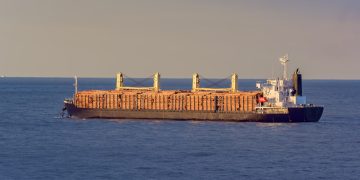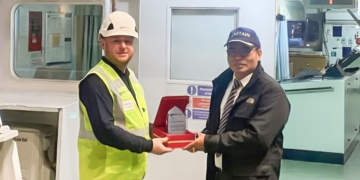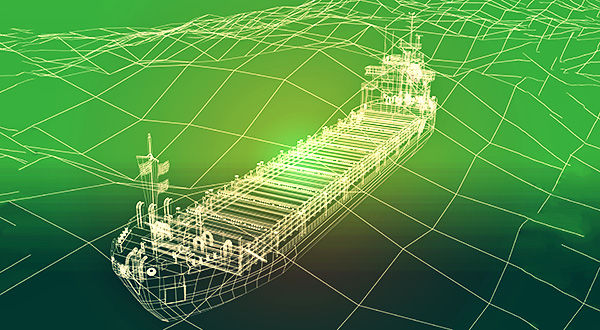For the global shipping industry, fundamental changes are about to occur. New regulations, greater demands from increasingly environmentally conscious customers and higher fuel prices mean that being competitive and maintaining a financially and environmentally sustainable business is a bigger challenge than ever before, argues Mikael Laurin, CEO, Lean Marine
There are many green technologies available to ship owners, and I have encountered a majority of them during my time as CEO of the tanker operating company Laurin Maritime. It is not an easy task to know which to invest in and which will deliver tangible fuel savings with a short ROI. You don’t want to take a large capital expense for something that doesn’t deliver instant quantifiable benefits to your ship’s daily costs or operational efficiency.
That said, the time for ship owning companies to make investments in technologies that will reduce fuel consumption, emissions to air and polluting effluents to water is now. There has never been greater pressure from shipping’s regulatory body, the International Maritime Organization (IMO), on shipping to clean up their act, and the deadlines are approaching fast. In addition to the international regulations, pressure is also mounting from regional regulatory bodies. Investment in clean technology should be viewed an investment in a company’s future operating profits but is also a necessity.
I have seen countless examples of significant wastage of energy on otherwise well-run vessels over the years. Perhaps, your vessel is one of them? I believe preserving energy gives multiple benefits, including reducing emissions, lowering costs, postponing maintenance and strengthening corporate image.
During my days at Laurin Maritime, I came across the technology FuelOpt™, a propulsion optimization system that literally saves fuel every second. My initial take on the technology was that of a skeptical ship-owner that questioned if the product really works and if so, why this isn’t done already or by someone else. But the estimated saving levels were encouraging and eventually Laurin Maritime became one of Lean Marine’s first customers in 2014. We initially installed it on six vessels, and some time thereafter implemented FuelOpt™ on the full fleet of medium range oil and chemical tankers. Installation was completed in few days, with no off-hire time required. We were very happy with the fuel saved and operational efficiencies gained resulting fuel efficiencies.
Direct fuel savings of up to 15% can be achieved with FuelOpt™, depending on the type of propulsion, trade and existing system settings for the vessel. With Fleet Analytics™, you can save an additional 10% by improving voyage execution. This means that when it comes to ROI, FuelOpt™ and Fleet Analytics™ have a quick return on investment time, usually less than a year.
Since 2018, I have sat on the technology provider side, as the CEO of Lean Marine, the developers of the FuelOpt™ system and the smart software Fleet Analytics™. Therefore, I can share experience as both a user and developer of vessel efficiency enhancing technology.
On the bridge, the crew has full control to set the vessel speed, engine power or maximum allowed fuel consumption, or a combination of these. Advanced technologies such as FuelOpt™ can keep a real time eye on the vessel’s performance and continuous variations (e.g. weather, hull resistance and load condition) through the sensors onboard and carefully controls the propulsive power to achieve stable and predictable vessel speed or consumption. This way, power peaks are avoided, and fuel consumption is significantly reduced.
The ordinary procedure on a vessel is that the bridge crew aims to control speed and consumption through the lever on the bridge, which controls engine RPM. Changes are seldom made more often that every couple of hours according to changing voyage conditions. This indirect way of aiming to control speed and/or consumption causes costly variations in speed and power caused by human factor and adjustment frequency. To improve the efficiency, one person must constantly monitor and make manual adjustments nonstop. This is an arduous task and prone to be affected by human errors. These tasks can be automated, and FuelOpt™, as one example, does this.
For vessels with controllable pitch propellers, the vessel rarely needs their full engine power and operates in varying load and weather conditions. It consistently operates with a lower propeller pitch and this causes huge hydrodynamic losses. Thus, controlling the pitch and RPM separately enables the vessel to reach maximum propeller thrust for the least power, thus save large amounts of fuel and lower its CO2 emissions. In addition to other benefits, it also acts as a dynamic tuning system for the propulsion machinery to assure that the engine and propeller operate at optimal conditions and adds an extra layer of operational safety by avoiding overload risk on the engine system and propulsion line.
Performance transparency is very importance to reach operational excellence. Ship operators need to monitor and analyze vessel performance more frequently than can be done using daily noon reporting. If you can measure it, you can manage it. Down in the engine control room, crew can receive detailed feedback and logs on the running parameters. You need the right tools onboard to do this, but you also need to educate people on using these tools.
From a previous tanker owner and operator who has benefited from sitting on both sides of the table, my message to the companies operating the global tanker fleet is to make the investment in propulsion optimization to stop energy waste at sea.
I believe that advanced technologies will play a big role in shipping industry and today, we provide automating fuel savings through advanced algorithms but make sure to hide the complexity behind user-friendly interfaces. This is the technology to invest in for ship operators looking for guaranteed immediate fuel savings and to curb energy wastage at sea.
The views expressed in this article are solely those of the author and do not necessarily represent those of SAFETY4SEA and are for information sharing and discussion purposes only.
During the last GREEN4SEA Athens Forum, Mr. Mikael Laurin talked about operational efficiency, giving several examples which play a major role in achieving fuel saving, such as speed optimization, hull condition, propeller pitch optimization, waste heat recovery and power management. View his video presentation herebelow:
Mikael Laurin, CEO, Lean Marine Sweden AB
 Mikael is currently Chief Executive Officer at Lean Marine Sweden AB. Lean Marine’s mission is to improve ship performance and work towards better environmental solutions. By providing automated-fuel saving and data analysis solutions, Lean Marine helps ship-owners run their vessels in the most fuel-efficient way. He is also a member of the board of Team Tankers International, a tanker owner and operator, and I-Tech AB, the supplier of the agent Selektope to marine anti-fouling manufacturers. Before starting with Lean Marine he was CEO of the Laurin Maritime group of companies. Laurin Maritime was an established operator of modern tankers for chemicals and oil focusing on long term contracts of affreightment in worldwide trade. The company managed a fleet of sixteen 45-50,000 deadweight IMO II / III chemical class ships. In April 2018 the company was acquired by Team Tankers International. Mikael also has wide experience from working as a management and strategy consultant. Mikael was one of the founding partners of Consiglio AB, based in Stockholm, Sweden, that provided strategy and Management consulting with focus on telecom and digital media. He started his professional career with Andersen Consulting, mainly focusing on logistics. After that Mikael joined Intelligence AB in Stockholm, to do Strategy and Management consulting projects for companies in the telecom, digital TV, ISP, and publishing businesses in e.g. Sweden, Czech Republic and Saudi Arabia. Mikael has held a number of board positions in both listed and unlisted companies, as well as industry associations.
Mikael is currently Chief Executive Officer at Lean Marine Sweden AB. Lean Marine’s mission is to improve ship performance and work towards better environmental solutions. By providing automated-fuel saving and data analysis solutions, Lean Marine helps ship-owners run their vessels in the most fuel-efficient way. He is also a member of the board of Team Tankers International, a tanker owner and operator, and I-Tech AB, the supplier of the agent Selektope to marine anti-fouling manufacturers. Before starting with Lean Marine he was CEO of the Laurin Maritime group of companies. Laurin Maritime was an established operator of modern tankers for chemicals and oil focusing on long term contracts of affreightment in worldwide trade. The company managed a fleet of sixteen 45-50,000 deadweight IMO II / III chemical class ships. In April 2018 the company was acquired by Team Tankers International. Mikael also has wide experience from working as a management and strategy consultant. Mikael was one of the founding partners of Consiglio AB, based in Stockholm, Sweden, that provided strategy and Management consulting with focus on telecom and digital media. He started his professional career with Andersen Consulting, mainly focusing on logistics. After that Mikael joined Intelligence AB in Stockholm, to do Strategy and Management consulting projects for companies in the telecom, digital TV, ISP, and publishing businesses in e.g. Sweden, Czech Republic and Saudi Arabia. Mikael has held a number of board positions in both listed and unlisted companies, as well as industry associations.

































































